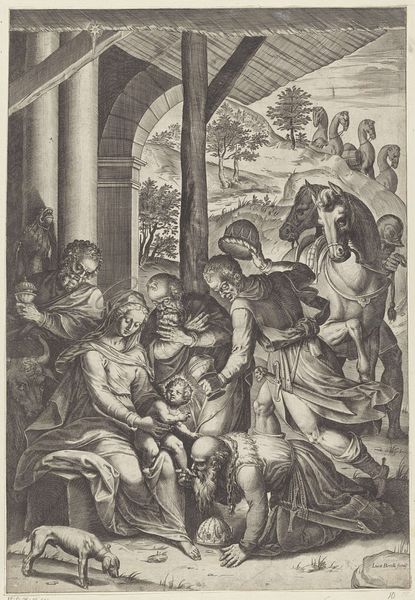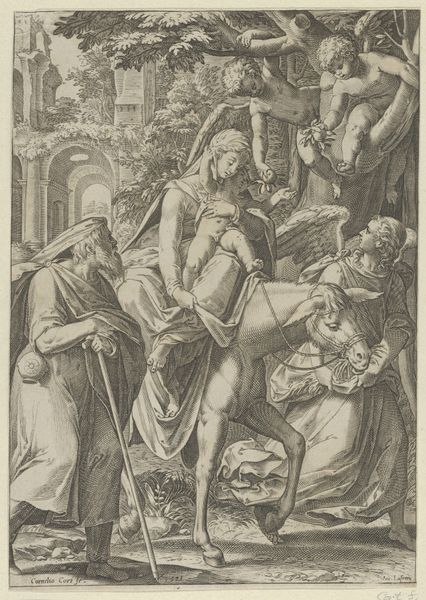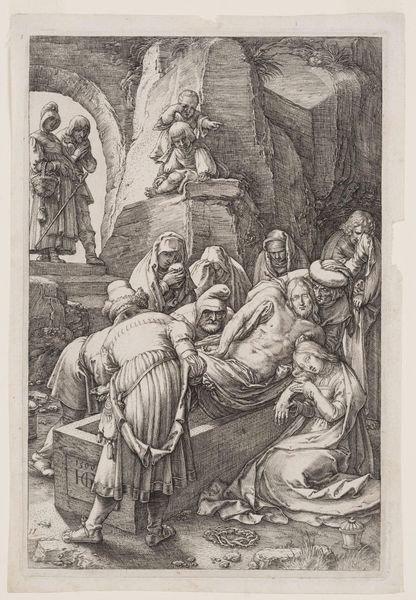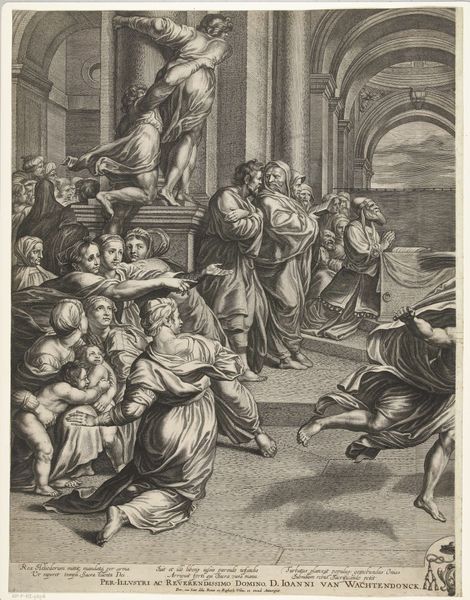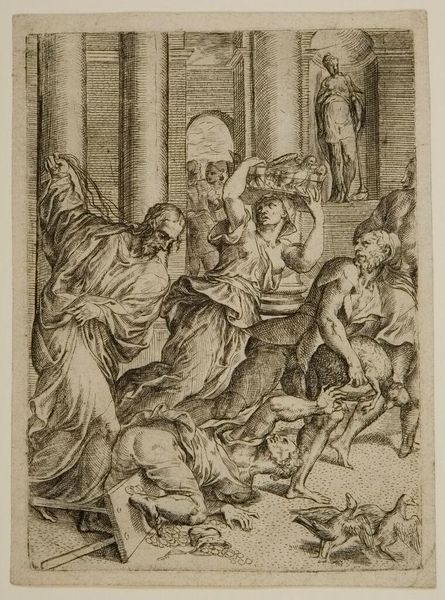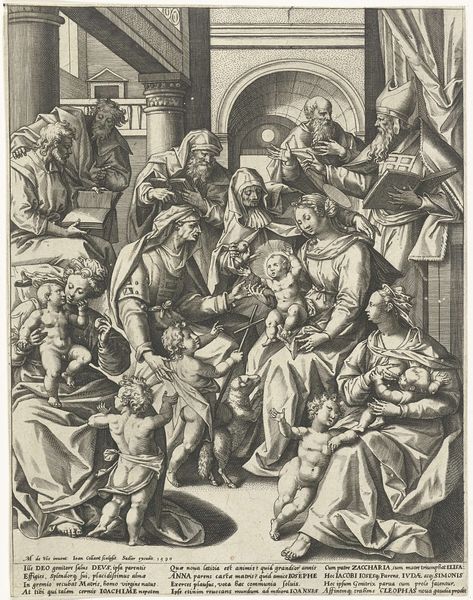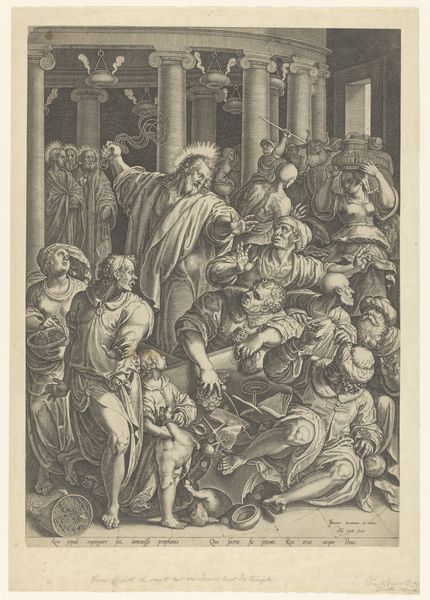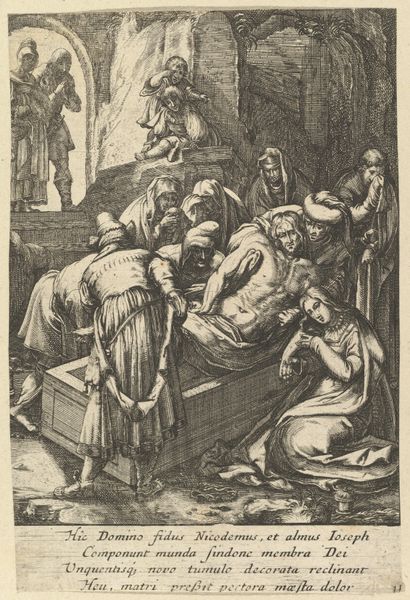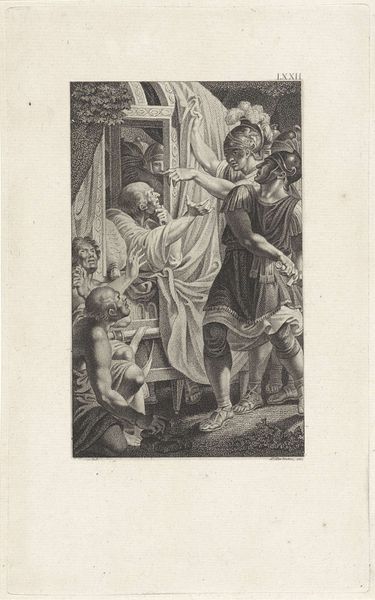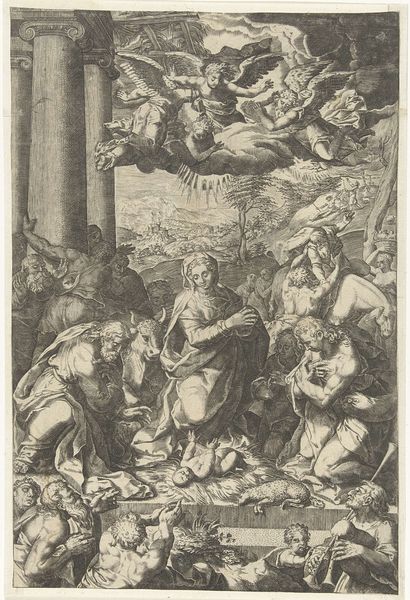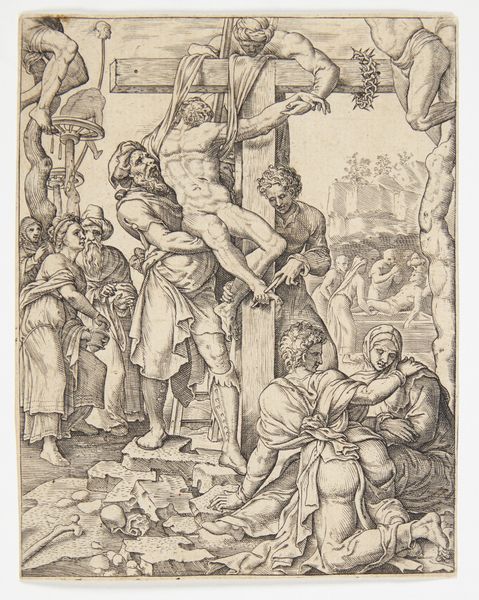
Christus verdrijft geldwisselaars uit de tempel 1514 - 1599
0:00
0:00
print, etching
# print
#
etching
#
mannerism
#
figuration
#
history-painting
#
italian-renaissance
Dimensions: height 179 mm, width 127 mm
Copyright: Rijks Museum: Open Domain
Curator: Standing here at the Rijksmuseum, we're looking at Marco dell'Angolo del Moro’s "Christus verdrijft geldwisselaars uit de tempel," a print rendered between 1514 and 1599 using etching. Editor: My initial impression is chaotic, energetic, but ultimately imbued with a potent, righteous anger. There's a strong diagonal composition that really heightens the sense of upheaval. Curator: The process is fascinating. The print medium would allow for a wider distribution, broadening the message’s reach. I wonder what kind of paper and inks were available, and what workshops would be accessible at this time in Venice. Editor: Absolutely, and context is crucial. Think about the power dynamics being challenged. Christ’s disruption of the market isn't just about commerce; it’s a challenge to the religious and political structures, really questioning who benefits from this temple’s economy. How does this visual challenge intersect with broader conversations about religion and state? Curator: The level of detail the artist achieved is something too, it clearly served a communicative and pedagogical role as a popular iteration that disseminated more widely, using readily-available means. Editor: I notice the depiction of the figures themselves. They feel caught between classical ideals and the somewhat distorted forms characteristic of Mannerism. It brings into question whose bodies and behaviors are valued. Curator: I find it thought-provoking to ponder on the use of relatively inexpensive materials, available locally in del Moro's environment, yet creating such a powerful image still imbued with this sense of drama and chaos. It challenges our modern perception of high art, which often revolves around rare or luxury materials. Editor: In these terms it still feels relevant – it holds up a mirror to those benefiting today from exploitative economies, demanding we consider what sacred spaces are being defiled. This etching is both history and call to action. Curator: Indeed. Considering the work from material and socio-historical positions offers intriguing dimensions to how we understand our world and it's ability to influence art-making. Editor: Absolutely, and how we continue to be influenced by it today.
Comments
No comments
Be the first to comment and join the conversation on the ultimate creative platform.
